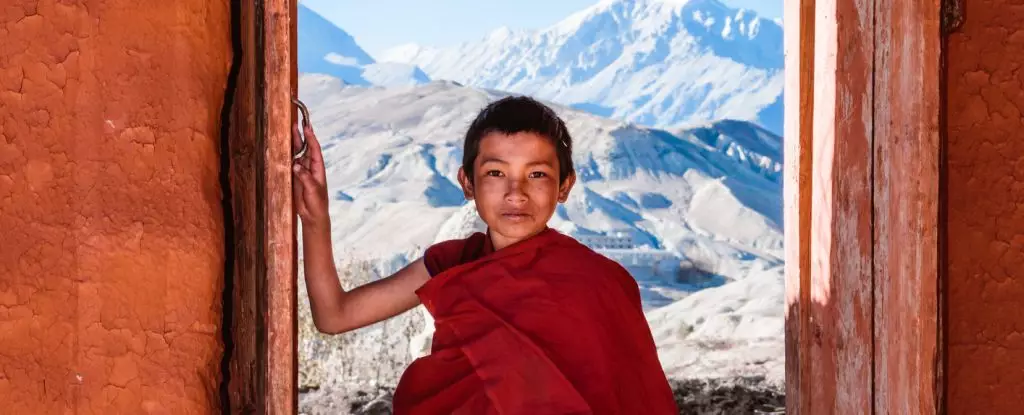Human evolution is an ongoing story of adaptation, and nowhere is this more evident than in the inhabitants of the Tibetan Plateau. This breathtaking region, located at heights that challenge even the most experienced mountaineers, serves as a prime example of how human beings are not finished evolving. For the last 10,000 years, Tibetan communities have developed unique physiological traits that enable them to thrive in conditions that would incapacitate standard human populations. While the idea of adapting to hypoxia— a state marked by insufficient oxygen levels in tissues—might seem stark, it highlights humanity’s incredible flexibility in meeting environmental challenges.
Altitude sickness can be a heavy burden, often claiming lives of climbers unable to acclimatize rapidly to reducing oxygen levels. In contrast, the Tibetan people have demonstrated an astonishing capacity to flourish in such an unforgiving environment. Anthropologist Cynthia Beall’s research has meticulously documented how these adaptations manifest, pushing the boundaries of our understanding of human biology. Her work exemplifies the intricate dance between genetic variation and environmental demands, illuminating the pathway of natural selection in real time.
Deciphering the Genetic Code of Survival
Beall’s insightful exploration into the genetic adaptations of Tibetan women sheds light on a remarkable nexus between reproductive success and altitude survival. Her recent study, featuring 417 women aged 46 to 86*, underscores an essential truth: the traits that enable survival are intricately woven into the fabric of generational success. The women studied have lived above 3,500 meters (11,480 feet), a stark environment that most humans find to be life-threatening. Yet, surprisingly, these women display reproductive successes that suggest robust adaptations to hypoxic conditions.
The analysis of factors like hemoglobin levels and blood oxygen saturation reveals compelling insights. Contrary to traditional assumptions where higher hemoglobin levels were deemed advantageous, Beall’s research highlights the benefits of moderate hemoglobin levels combined with elevated oxygen saturation. This intriguing finding suggests an optimal balance of traits that maximize oxygen delivery without overburdening the cardiovascular system. The realization that women with the most successful childbirth rates were those exhibiting intermediate hemoglobin levels pushes our conceptual boundaries regarding how human beings can evolve to mitigate high-altitude pressures.
The Heart of Adaptation: Cardiac and Respiratory Innovations
Digging deeper, the study extends beyond hemoglobin dynamics to encompass shared cardiac and respiratory modifications. Tibetan women achieving the highest reproductive success correlated with anatomical features designed for optimal oxygen transport. Wider left ventricles in their hearts facilitate increased blood flow, enhancing oxygen delivery across their systems. Coupled with other traits, such as high blood flow rates to the lungs, this combination enables Tibetan residents to efficiently adapt to their challenging environment.
This anatomy enigma elevates the understanding of how our bodies communicate with the environments in which we live. Rather than facing adaptation as a monolithic challenge, these women have carved unique paths of survival that emphasize both physiological and cultural factors. Remarkably, their reproductive strategies – starting families at a young age and engaging in long-term marriages – intertwine with their biological makeup, showcasing a multifaceted approach to enduring in a high-altitude setting.
A Broader Perspective on Natural Selection
The implications of Beall’s study reach far beyond the confines of the Tibetan Plateau, urging a reevaluation of natural selection principles. Instead of viewing survival traits as isolated phenomena, the interdependence of genetics, environment, and cultural practices becomes evident. The ability to endure in adverse conditions reflects an ongoing selection process that epitomizes the resilience of the human spirit.
This understanding challenges our existing views on how populations adapt to stressors and incorporates the vital role of cultural practices in shaping reproductive success. For instance, higher live birth rates observed among Tibetan women with characteristics akin to individuals from lower altitudes illuminate the adaptability of the human reproductive system. By recognizing that genetic variation can be fine-tuned by lifestyle and reproductive choices, the complexity of human adaptation emerges in vivid detail.
Charting Human Potential Through Evolution
Combining genetic and cultural influences provides a profound understanding of the human experience, particularly in extreme environments. As we uncover the extraordinary adaptations of the Tibetan people, the conversation shifts from mere survival to thriving amid adversity. This revelation not only enriches biological studies but also prompts us to celebrate the rich tapestry of what it means to be human. The inspiring story of the Tibetan highlanders serves as a powerful reminder that in the face of powerful environmental forces, humans remain resilient, ever-evolving, and, ultimately, triumphant.

